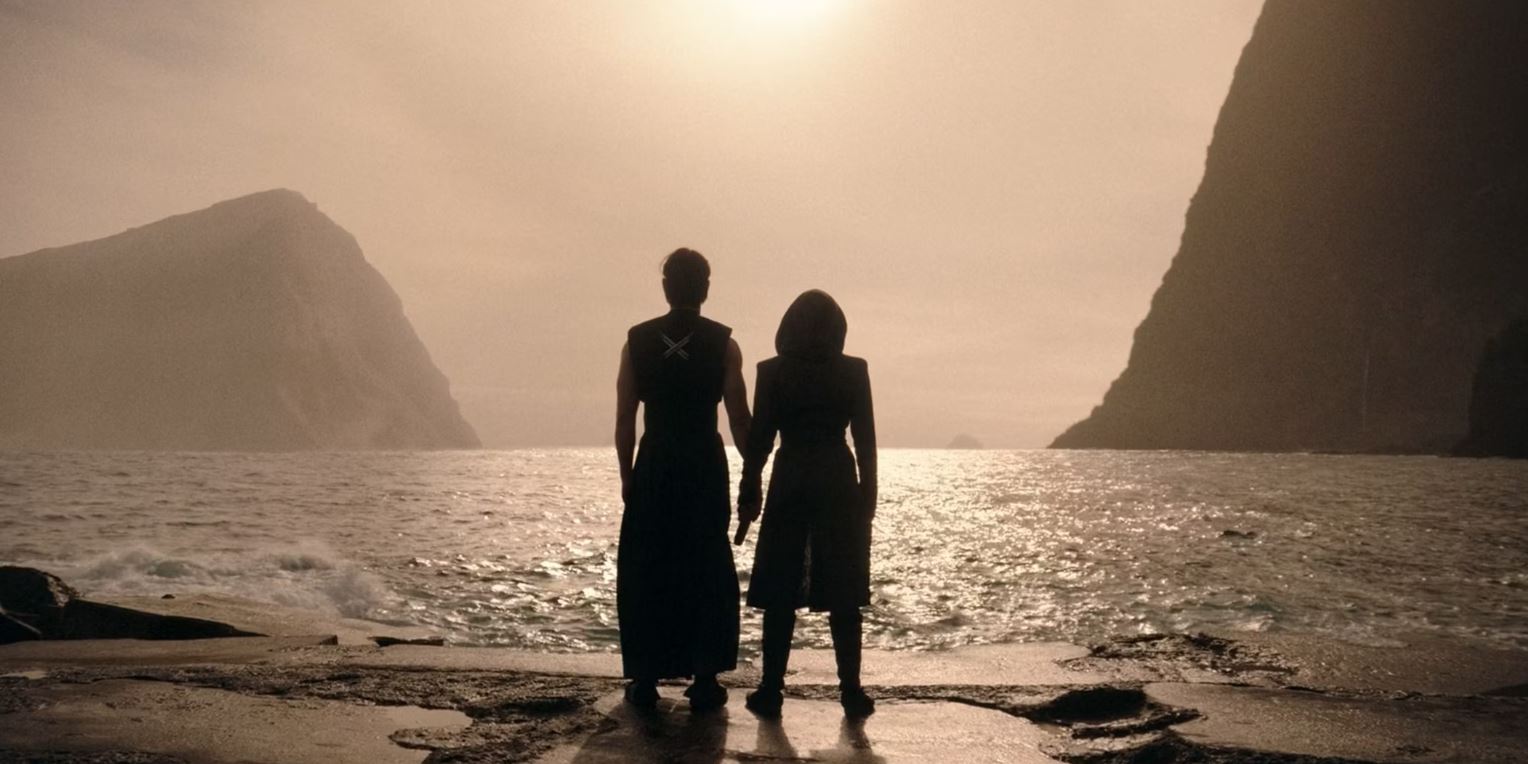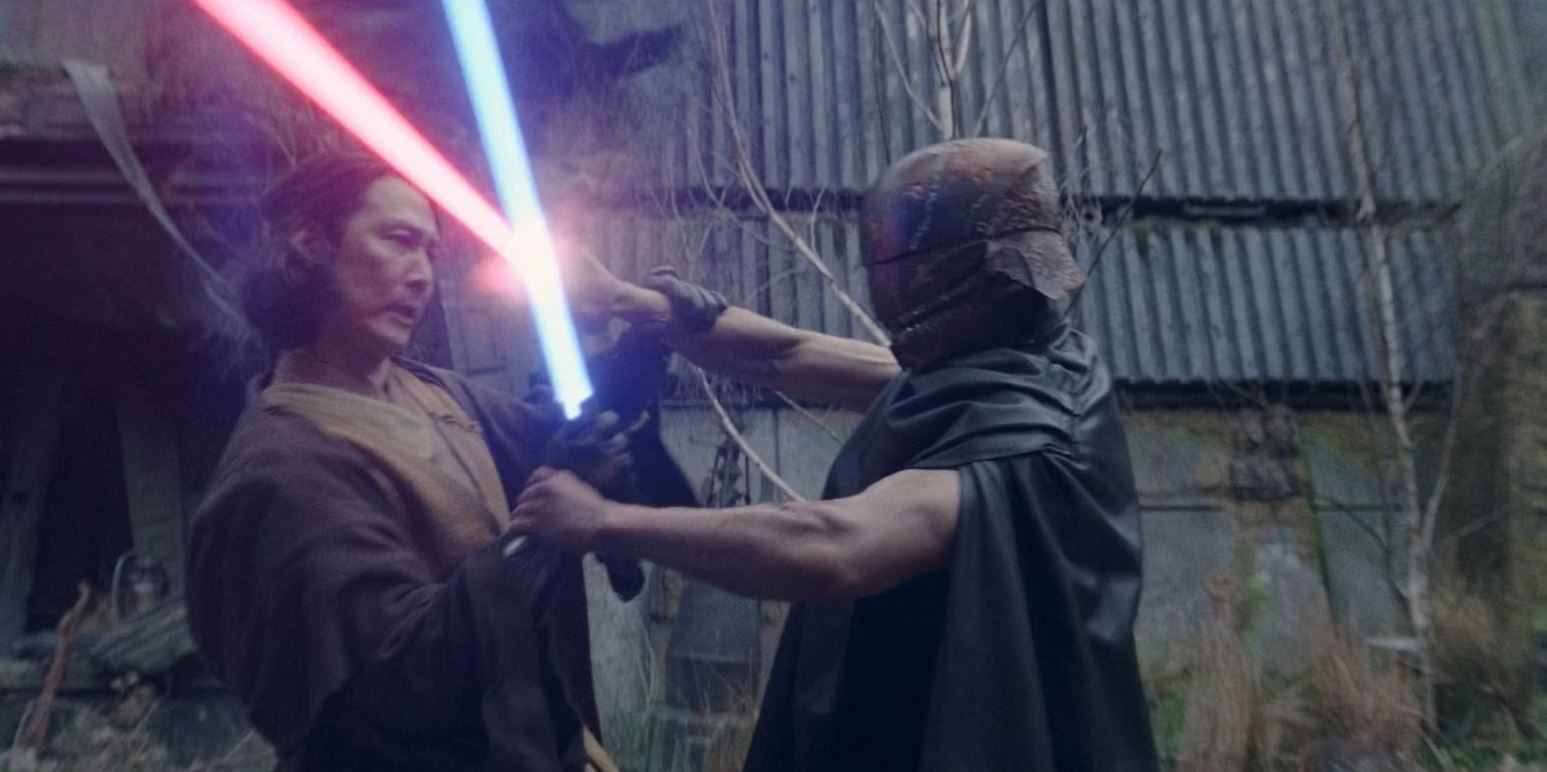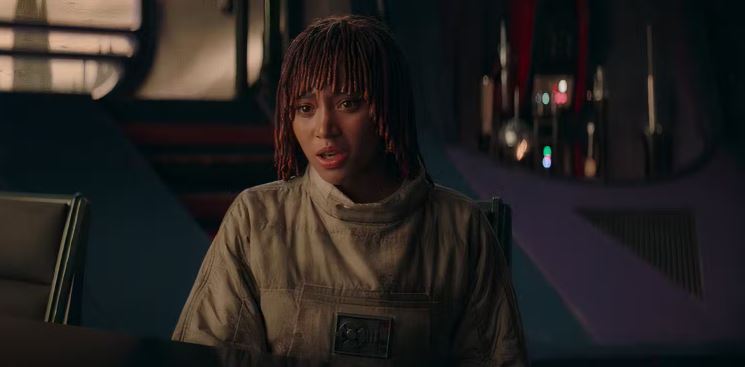When The Acolyte was officially canceled in August 2024 — barely a month after its Season 1 finale aired on Disney+ — Star Wars fan reactions spread rapidly across social media. The series, created by Leslye Headland and starring Amandla Stenberg as Osha/Mae, ended on a cliffhanger. Dozens of burning questions were left unanswered, and countless hearts and hopes were shattered. While there have been plenty of fan theories attempting to explain why the show was canceled so abruptly and so soon after its first season aired, there may be more concrete reasons the series is not set to continue.
According to Variety, who broke the news of the show’s official ending, there is not yet an official explanation as to why there will not be a Season 2 of The Acolyte. The news outlet does, however, point to one key factor that makes the sudden cancelation far less surprising. Star Wars has only been streaming shows for as long as Disney+ has existed — going on five years as of November 2024 — and it can be difficult to comprehend why a show that could have brought in more revenue for the platform would not be allowed to continue after only one season. The toxic fandom causing the cancelation is likely not the answer, however. To understand why these kinds of decisions are being made, it is first important to understand the state of streaming as this article is being written.
The Acolyte Cancelation is Part of a Larger Problem

Streaming platforms as we know them today skyrocketed in popularity when Netflix began producing original content in 2016. The debut of Stranger Things in July of that year completely redefined what streaming platforms were capable of and what audiences expected from them. This is why most major television networks now have a streaming service that not only reposts previously broadcasted media but often offers original programming as well. At first, this seemed like a profitable, unbreakable model. Customers paid a set subscription fee per month to have access to all the content on that platform, often without ads.
According to Investor’s Business Daily, companies in the video streaming game are no longer focusing on doing whatever it takes to grow subscriber numbers the way they were in the beginning. It’s all about profit now, which means anything these businesses can do to cut costs and make as much money as possible, they will do it. That’s why subscribers now have to pay more to have access to a platform’s full slate of content or watch their shows without any ads. Even if customers don’t want to pay more, subscription prices continue to rise anyway.
This only begins to showcase all the resulting problems. Most importantly, though, anything bad for customer experience is bad for streaming companies. People don’t want to pay as much for streaming services as they once did for cable. Subscribers don’t want to have to pay more to see exclusive content or to watch things ad-free — that’s why they started paying for one, maybe several different streaming services in the first place. Add the fact that audiences are hungry for longer episodes, longer seasons, and shorter gaps between seasons — and more than just one season of shows they like, for that matter — and it starts to make sense why streaming services are failing.
The Acolyte Was Not the Success Disney Hoped For

Success, in this context, might not mean what many assume it means. There was plenty of praise for The Acolyte among Star Wars fans. The first season tied up many loose ends, but also provided the kind of cliffhanger finale that typically intrigues audiences enough to come back for more. To explain why Disney, a major company focused on profit and return on investment above all else, likely chose not to renew The Acolyte for a second season, it’s necessary to look at the numbers. No audience reviews or fan reactions to the show overall.
Nielsen Media Research is widely known for releasing its weekly ratings reports for shows viewed by households in the United States. These ratings do not give a full global picture of how many households are watching around the world, but it does allow the ability to look at patterns in how data shifts from week to week as a show airs new episodes. In its first week and over its first two episodes, The Acolyte generated 488 million minutes watched. From week to week, the number of minutes watched for The Acolyte decreased. The final episode of Season 1 generated 335 million minutes watched. While that is still a big number, compared to the first week, it is a significant drop in viewership.
Regardless of how an audience feels about a series, how good the storytelling is, or how much social media buzz it continues to generate from episode to episode, companies like Disney are focused on numbers. How much money is a show bringing in compared to how much it costs to make it? Can these numbers justify the cost of production of an entirely new season? The downward trend in viewership from the
beginning of the series to the end may have been all it took for the answer, in this case, to be “no.”
The Future of Disney+ Star Wars Shows is Questionable

There are currently three live-action Star Wars Disney+ series confirmed to be in development. The first, Skeleton Crew, has released a trailer and is set to release in December 2024. That show’s first season has already been made and will be released on streaming no matter what. The second season of Andor is currently in production, and will likely release in 2025 at the absolute earliest. A second season of Ahsoka has also been confirmed. No other shows have been announced. The Mandalorian & Grogu movie seems to be the priority over any future seasons of The Mandalorian. Shows such as Rangers of the New Republic and the previously announced Lando Calrissian series are no longer in production.
Disney may have caught on to the notion that streaming, especially when it comes to major properties such as Star Wars and the Marvel Cinematic Universe, is no longer the promising money-maker it once was. If audiences are not tuning in week to week to watch new content that costs hundreds of millions of dollars to make, these shows become projects the company can no longer financially justify. There is often an assumption in online fandom spaces that if audiences talk more about the shows they like, those shows will stick around. In reality, if those positive reactions don’t translate into consistently high viewership numbers, all the positive social media posts in the universe won’t make a difference.
Star Wars was once a highly-anticipated cinematic event. Audiences often waited years to be able to buy tickets for the next big story in a galaxy far, far away. The illusion that Star Wars is a major special event vanishes almost completely once short seasons of shows made up of even shorter episodes become the general, sporadic offering. Viewers are losing interest in streaming services in general because the quality of their experience does not match the price they are paying for it. The Acolyte may have been beloved by many, but Disney is not seeing that reflected on its spreadsheets.
Streaming has changed significantly over the last eight years, and it is impossible to predict what things will look like eight years from now. In terms of Star Wars specifically, it would not be outside the realm of possibility to see movies make a return as Lucasfilm’s primary content focus. Fans have been beyond fortunate over the past five years to watch a handful of new shows, meet dozens of new characters, and experience Star Wars on the small screen more frequently than they ever have before. That time may be coming to an end, however, and it’s likely not the fault of Star Wars in particular. There is a much bigger issue arising that streaming companies may not be able to fix, and if the collapse of streaming services as we know it is the result, Star Wars as an entity will simply have to find new ways to capture the hearts of fans once more.
